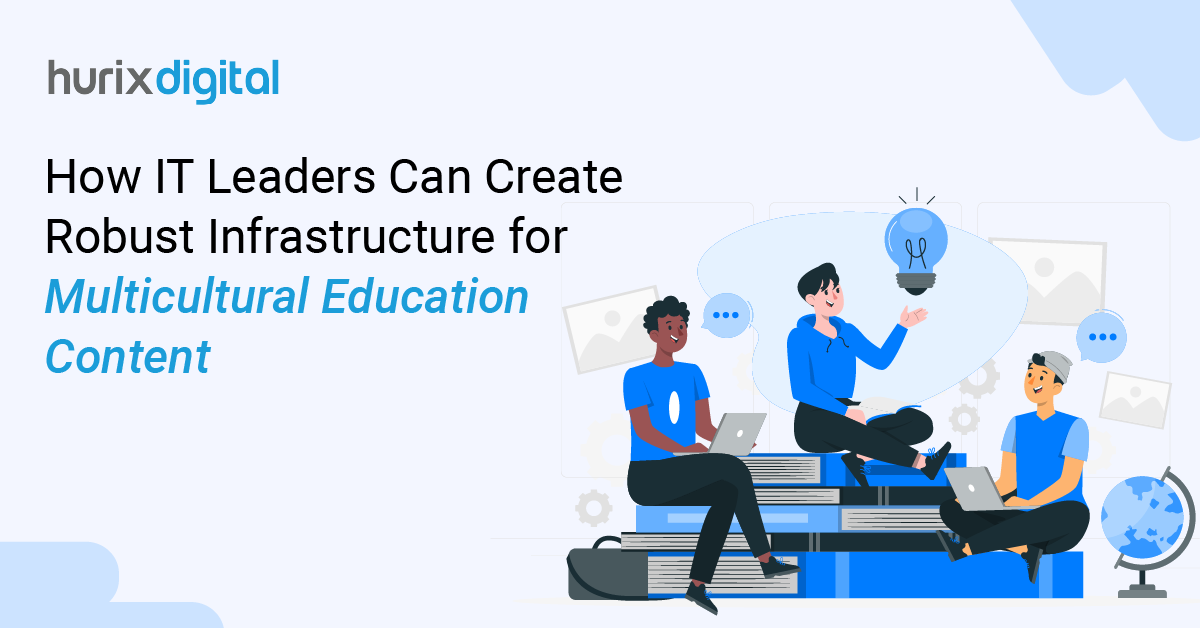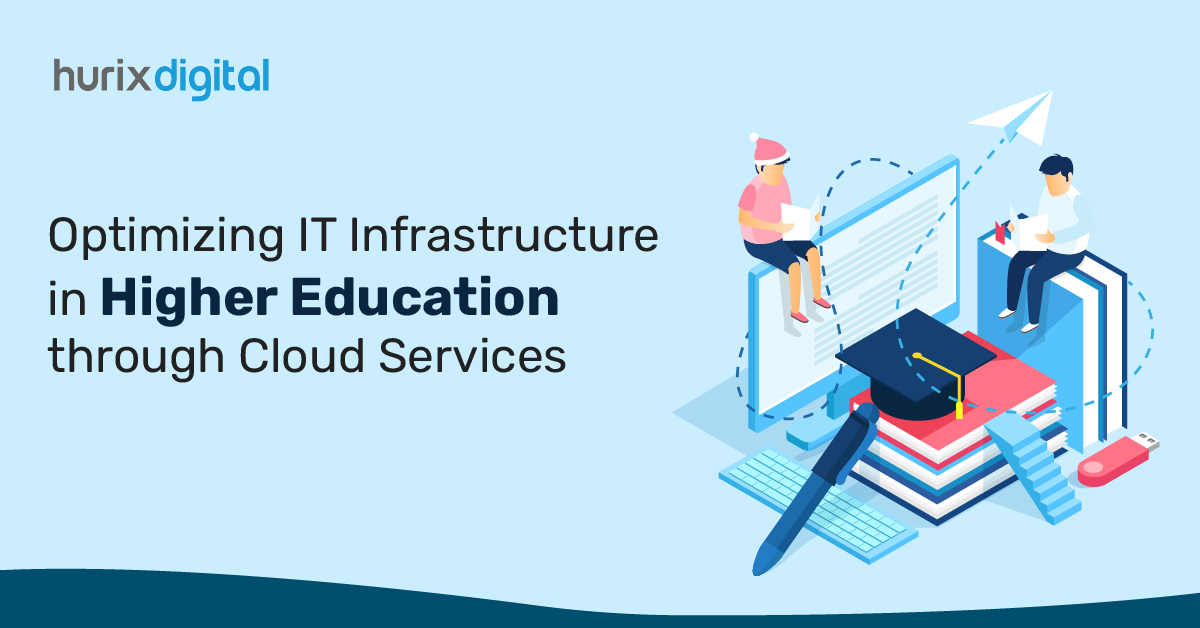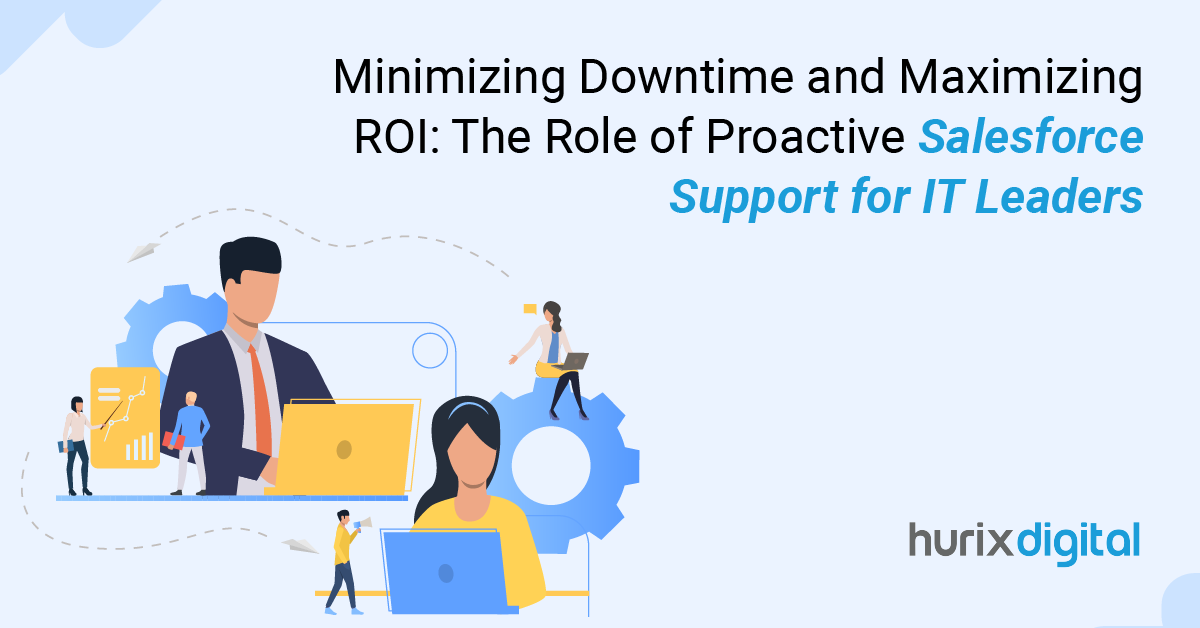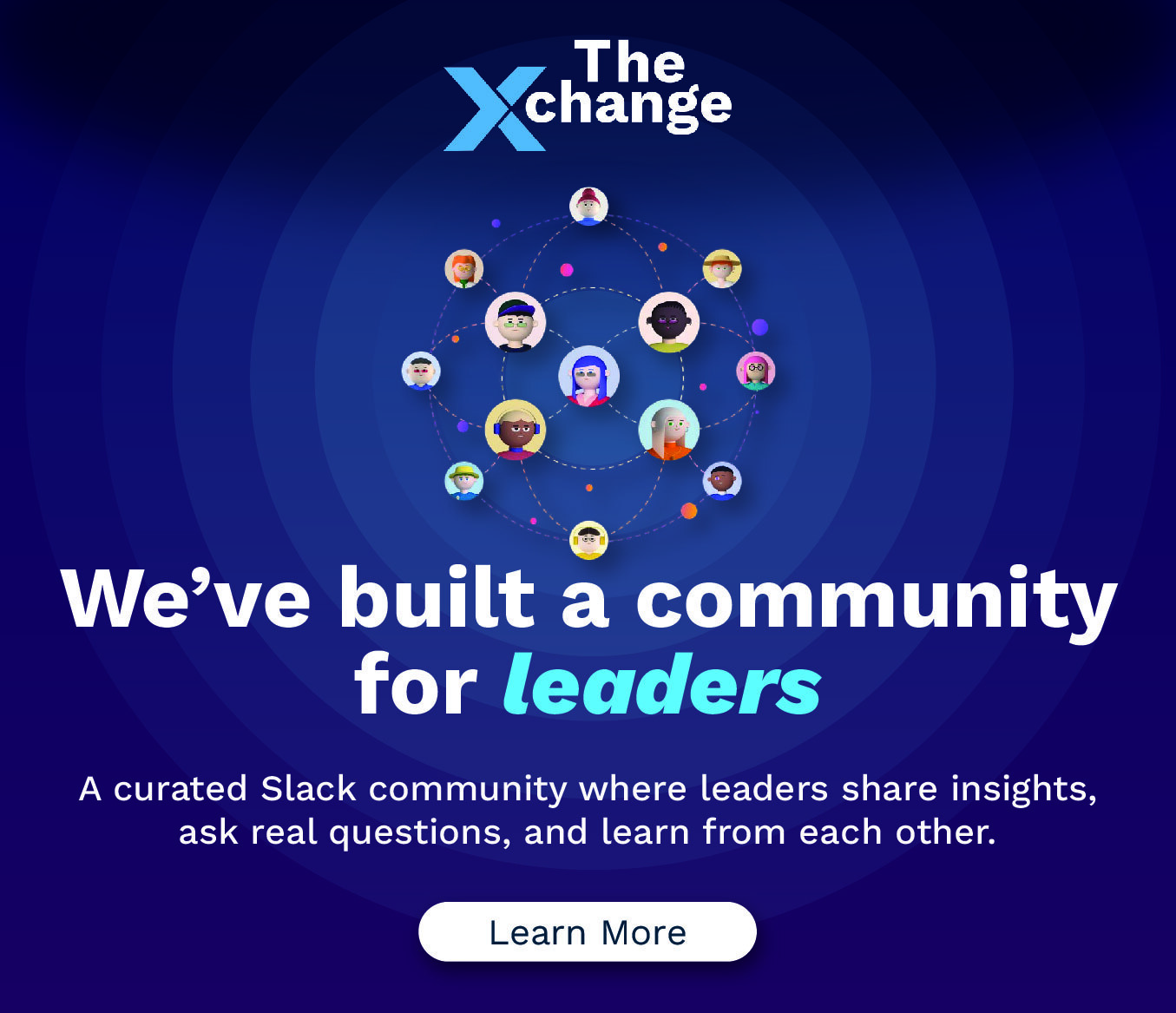
How IT Leaders Can Create Robust Infrastructure for Multicultural Education Content?
Summarize with:
As societies continue to interact globally, students are more interconnected than ever before. Educational institutions have started to appreciate the significance of multicultural education content in fostering inclusivity, cultural sensitivity, and international perspectives among learners.
According to 98% of teachers, cultural diversity in education helps students develop intellectual skills. Amidst this background, IT leaders face great difficulty in establishing and managing an IT infrastructure that can securely archive various multimedia content.
This article focuses on key technical requirements for developing an efficient and reliable IT infrastructure for diverse learning materials.
Table of Contents:
- Understanding Multicultural Education Content
- Challenges in Managing Diverse Content
- Key Considerations for Building a Secure and Scalable IT Infrastructure
- Best Practices for Managing Multicultural Content
- Wrapping Up!
Understanding Multicultural Education Content
Multicultural education content refers to instructional materials that consider the multiple ethnicities, languages, and social backgrounds of learners. This material comes in various forms such as video clips or films, sound recordings, eBooks, interactive online courses, and more.
The goal is to meet the unique educational requirements of learners from diverse cultural settings. It seeks to create an inclusive learning atmosphere that will positively appeal to a global community, promoting respect, mutual understanding, and cooperation.
Challenges in Managing Diverse Content
IT teams face unique challenges when it comes to managing education content. It necessitates a flexible and robust infrastructure due to diverse file formats, languages, and cultural contexts.
In addition, there are extra levels of complexity that come from secure storage needs and efficient content delivery. IT leaders should ensure that these infrastructures can adequately handle diverse types of content without sacrificing performance, security, or accessibility.
Also Read: How Chief Learning Officers Can Accelerate IT Team Upskilling with AI-Powered eLearning Services?
Key Considerations for Building a Secure and Scalable IT Infrastructure
1. Data Security in Multicultural Education
A. Importance of Data Security
In this digital era, data security is a major concern, especially in the educational sector. As per a 2023 survey, 79% of higher education providers and 80% of lower education providers stated that they have been affected by ransomware attacks.
Most multicultural educational content includes sensitive information like student data, proprietary educational materials, and copyrighted media. IT leaders must prioritize their efforts towards safeguarding these from illegal access or any breaches and other cyber threats.
B. Implementing Strong Security Measures
IT teams must impose tough encryption protocols to protect multicultural content. Data can be encrypted at rest and during transmission, making it hard for hackers to access.
Multi-factor authentication (MFA) should be employed to restrict access to sensitive materials. This will ensure that only approved users can view or modify the content.
Regular security audits and vulnerability assessments are important for pinpointing and tackling any weaknesses in the security systems.
C. Compliance with International Data Protection Standards
Education institutions serving global clients must comply with various international regulations on data privacy. The most prominent laws include the General Data Protection Regulation (GDPR) in Europe and the Family Educational Rights and Privacy Act (FERPA) in the United States. This way, they can improve their reputation while safeguarding student data.
2. Scalable Content Management Systems (CMS)
A. Role of CMS in Managing Multicultural Content
A CMS is the central pillar of any IT infrastructure that is charged with handling multicultural education content. The CMS should be capable of supporting several generic content formats, such as text, images, videos, and interactive modules.
It must also accommodate multiple languages and cultures. As the content grows, a scalable CMS can handle the increased load without a major impact on performance.
B. Features of a Practical CMS
An effective CMS for multicultural education should offer the following features:
- Multilingual Assistance: The CMS must allow for different languages, making it possible to create, store, and retrieve content in multiple languages.
- Integration with Learning Platforms: An ideal CMS fits smoothly together with learning management systems (LMS), virtual learning environments (VLE), as well as other academic setups.
- User-Friendliness: An interface that is easy to use is requisite among content creators, administrators, and instructors to modify web content effortlessly.
- Scalability: The CMS should be capable of managing greater volumes of content and users without compromising functionality.
3. Network Bandwidth and Content Delivery
A. Understanding Network Bandwidth Requirements
For the successful delivery of multicultural education content, the network infrastructure should be capable of handling high traffic and large files. Smooth content delivery highly depends on bandwidth which refers to the amount of data that can be sent over a network in a specific time. Lack of bandwidth threatens high-quality pictures and sound. It can also result in a slower internet connection, lagging, and even buffering.
B. Optimizing Bandwidth for Diverse Content Delivery
To reduce the amount of internet usage, IT leaders should consider employing Content Delivery Networks (CDNs). CDNs ensure that content is spread across several servers located within various geographic locations.
This reduces lag time as well as increases access speed regardless of one’s location. Additionally, lowering media file sizes through data compression techniques can further curb bandwidth usage.
C. Ensuring Reliable Content Delivery
To uphold the integrity of multicultural education programs reliable delivery systems are essential. IT teams need to regularly evaluate network performance to spot potential bottlenecks and correct them. This will ensure that all users can receive their material seamlessly.
4. Secure Storage of Multicultural Content
A. Choosing the Right Storage Solutions
Secure storage is a vital part of a solid IT infrastructure for multicultural education content. Educational institutions should select storage solutions that provide high availability and redundancy and adhere to data protection standards.
Cloud-based storage solutions like Google Cloud Storage and Microsoft Azure are capable of managing large volumes of diverse content.
B. Hybrid Storage Solutions
Hybrid solutions enable institutions to store sensitive data on-site as well as use the cloud for scalability and redundancy. This method enables more control over data security while still benefiting from cloud storage’s scalability and cost-effectiveness.
C. Backup and Disaster Recovery
For protecting multicultural education materials from hardware failures, cyberattacks or natural calamities, there must be an effective backup and disaster recovery system put in place.
Backups should be performed regularly, and data should be stored in several locations. This ensures that content can be easily restored in case there’s a problem.
Best Practices for Managing Multicultural Content
1. Developing Content Management Protocols
It is important to have some basic rules in place that govern the creation, storage, and access to digital educational resources. These guidelines should specify the functions and roles assigned to IT staff and educators. This will ensure that everyone is on the same page while dealing with diverse content types.
2. Regular Training and Awareness Programs
IT leaders should conduct regular training programs to help their staff members understand how to handle multicultural information. The classes should cover topics like data safety measures, content revisions, and other issues that affect international regulations.
3. Leveraging AI and Automation
Artificial Intelligence (AI) and automation tools can tremendously improve the administration of multicultural education content. AI-driven content tagging, categorization, and translation tools can reduce the burden on IT teams and improve efficiency.
Also Read: How do AI and Machine Learning Offer the Best Solutions for Modern Compliance Training?
Wrapping Up!
The future of IT infrastructure for multicultural education will be shaped by emerging technologies like AIs, blockchains, and 5G networks. With the advent of technology, personalized learning experiences that suit individual students’ cultural and linguistic needs will receive increased emphasis.
Therefore, supportive IT infrastructure would be required to accommodate adaptive learning platforms capable of dynamically adjusting content according to students’ preferences. Hurix Digital is at the forefront of providing innovative digital solutions for educational institutions and businesses.
Our expertise in secure and scalable IT infrastructure ensures that your institution can effectively manage and deliver multicultural education content. We offer cutting-edge online education solutions tailored to meet the diverse needs of global learners.
Contact us today to learn how we can help you build a robust and inclusive IT infrastructure.
Summarize with:

Vice President & SBU Head –
Delivery at Hurix Technology, based in Mumbai. With extensive experience leading delivery and technology teams, he excels at scaling operations, optimizing workflows, and ensuring top-tier service quality. Ravi drives cross-functional collaboration to deliver robust digital learning solutions and client satisfaction
 A Space for Thoughtful
A Space for Thoughtful 



